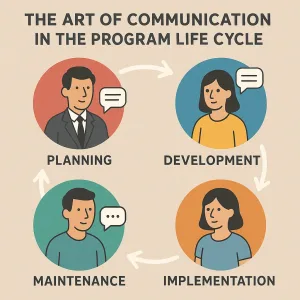Introduction to Project Management Status Terms
Status terms serve as essential indicators that provide insights into the progress and health of a project. These terms are critical for effective communication among stakeholders, ensuring that everyone involved has a clear understanding of where the project stands at any given moment.
Defining Project Management Status Terms
Project management status terms refer to the specific language and terminology used to describe the current state of a project. Common terms include:
- On Track: Indicates that the project is progressing as planned and is likely to meet its deadlines.
- At Risk: Suggests that there are potential issues that could impede progress, requiring attention to mitigate risks.
- Delayed: Signifies that the project is behind schedule, necessitating corrective actions to get back on track.
- Completed: Marks the successful conclusion of project tasks or phases.
These terms are vital for tracking progress, facilitating discussions, and making informed decisions throughout the project lifecycle.
Importance of Status Terms in Traditional Project Management
In traditional project management, status terms play a crucial role in structured environments where clear goals and timelines are established. They help project managers and teams to:
- Communicate Effectively: Status terms provide a common language that enhances communication among team members and stakeholders, reducing misunderstandings.
- Monitor Progress: By using standardized terms, project managers can easily assess the project’s status and identify areas that require attention.
- Facilitate Reporting: Regular status updates using these terms allow for consistent reporting to stakeholders, ensuring transparency and accountability.
However, the rigidity of traditional status reporting can sometimes hinder responsiveness to change, as it often relies on fixed requirements and timelines.
The Relevance of Agile in Modern Project Management
Agile methodologies have emerged as a transformative force in project management, particularly in environments characterized by uncertainty and evolving requirements. Agile practices prioritize flexibility, collaboration, and iterative progress, which significantly alters the approach to status reporting.
- Iterative Development: Agile emphasizes delivering work in small, incremental cycles, allowing for frequent reassessment of project status and priorities. This iterative approach contrasts with traditional methods, where status is often reported at fixed intervals.
- Dynamic Status Terms: In Agile, status terms evolve throughout the project lifecycle. For instance, terms like “In Progress” or “Needs Review” may be used more frequently to reflect the ongoing nature of work, rather than waiting for a formal update.
- Focus on Value Delivery: Agile methodologies shift the focus from merely tracking tasks to delivering value to customers. This change in perspective influences how status terms are defined and utilized, emphasizing outcomes over outputs.
The Traditional Landscape of Status Reporting
Traditional methodologies, particularly the Waterfall model, have long been the standard approach for managing projects. This linear and sequential process divides projects into distinct phases, where each phase must be completed before the next one begins. While this structure can provide clarity and predictability, it also imposes certain limitations, especially in the context of status reporting.
Traditional Project Management Methodologies
- Waterfall Model: This is the most recognized traditional methodology, characterized by its rigid structure. Projects are divided into clear phases such as requirements gathering, design, implementation, testing, and maintenance. Each phase must be completed before moving on to the next, which can lead to challenges in adapting to changes or unforeseen issues that arise during the project lifecycle [1][4].
- Linear Process: Traditional project management follows a linear process that often restricts flexibility. This means that any changes or adjustments to the project scope can be difficult to implement once the project is underway, leading to potential delays and increased costs [1][4].
Common Status Terms Used
In traditional project management, status reporting typically relies on a set of standardized terms to communicate the progress of a project. Some of the most common status terms include:
- On Track: This term indicates that the project is progressing as planned and is expected to meet its deadlines and objectives.
- At Risk: When a project is labeled as “at risk,” it signifies that there are potential issues that could impact its timeline or deliverables. This term serves as a warning that proactive measures may be needed to mitigate risks.
- Delayed: This status is used when a project has fallen behind its planned schedule. Delays can arise from various factors, including resource availability, unforeseen challenges, or scope changes.
These terms provide a snapshot of the project’s health but often lack the nuance needed to convey the complexities of project dynamics [2][3].
Challenges Faced with Traditional Reporting
Despite the clarity that traditional status terms can provide, there are significant challenges associated with this approach:
- Inflexibility: The rigid structure of traditional methodologies means that once a project is underway, making changes can be cumbersome. This inflexibility can hinder a team’s ability to respond to new information or changing circumstances, ultimately affecting project outcomes [1][8].
- Lack of Real-Time Updates: Traditional status reporting often relies on periodic updates, which can lead to outdated information being communicated to stakeholders. This delay in reporting can result in decision-making based on stale data, potentially exacerbating issues that could have been addressed earlier [3][10].
The Rise of Agile Methodologies
The emergence of Agile methodologies has significantly transformed the landscape of project management, particularly in how status reporting is approached. Agile practices prioritize adaptability and collaboration, which are essential in today’s fast-paced development environments. Here’s a closer look at the core principles of Agile and its frameworks, as well as the shift from traditional project management structures to more iterative processes.
Agile Philosophy: Adaptability and Collaboration
At its core, Agile is a philosophy that promotes flexibility and responsiveness to change. Unlike traditional project management approaches that often rely on rigid structures and extensive documentation, Agile encourages teams to embrace change and adapt their plans based on real-time feedback and evolving requirements. This adaptability is crucial for ensuring that the final product aligns with customer needs and expectations, fostering a culture of continuous improvement and collaboration among team members [2][3].
Key Agile Frameworks
Several frameworks embody the Agile philosophy, each with its unique practices and processes:
- Scrum: This framework divides projects into time-boxed iterations called sprints, typically lasting two to four weeks. Scrum emphasizes regular feedback loops through daily stand-up meetings and sprint reviews, allowing teams to assess progress and make necessary adjustments [4][9].
- Kanban: Kanban focuses on visualizing work in progress and managing flow. It uses a board to represent tasks, enabling teams to see bottlenecks and prioritize work effectively. This framework promotes continuous delivery and encourages teams to limit work in progress to enhance efficiency [4][8].
- Extreme Programming (XP): XP is a software development methodology that emphasizes technical excellence and customer satisfaction. It incorporates practices such as pair programming and test-driven development, ensuring high-quality outputs while remaining responsive to changing requirements [6].
Shift from Rigid Structure to Iterative Processes
The transition from traditional project management to Agile methodologies marks a significant shift in how teams approach project status reporting. Traditional methods often relied on comprehensive documentation and fixed timelines, which could lead to inflexibility and misalignment with customer needs. In contrast, Agile methodologies promote iterative processes that allow for regular reassessment of project status and priorities.
This iterative approach enables teams to deliver incremental value, making it easier to incorporate feedback and adjust plans as necessary. Agile practices encourage frequent communication and collaboration, which not only enhances team dynamics but also leads to more accurate and relevant status updates. As a result, project management status terms have evolved to reflect this new reality, focusing on progress and adaptability rather than strict adherence to initial plans [3][9].
Transformation of Status Terms in Agile
The evolution of project management status terms has been significantly influenced by Agile methodologies, which have redefined how teams communicate progress and challenges. This transformation is particularly relevant for Agile practitioners and Scrum Masters who seek to enhance their project management practices. Below are key points that illustrate this evolution:
Agile-Specific Status Terms: Agile methodologies have introduced a set of status terms that are more descriptive and actionable compared to traditional project management terminology. Common terms include:
- In Progress: Indicates that work is actively being undertaken on a task or user story.
- Blocked: Signifies that progress on a task is hindered due to external dependencies or issues that need resolution.
- Done: Represents that a task has been completed and meets the agreed-upon acceptance criteria. This clarity in terminology helps teams quickly assess the state of work and identify areas needing attention.
Significance of Visual Management Tools: Agile practices emphasize the use of visual management tools to enhance transparency and communication. Tools such as:
- Kanban Boards: These boards visually represent the flow of work, allowing teams to see the status of tasks at a glance. They help in identifying bottlenecks and managing workflow effectively.
- Burndown Charts: These charts track the amount of work remaining in a sprint, providing a clear visual representation of progress over time. They are instrumental in forecasting project completion and adjusting plans as necessary.
Daily Stand-Ups and Sprint Reviews: Agile methodologies incorporate regular meetings that play a crucial role in status updates:
- Daily Stand-Ups: These brief meetings allow team members to share their current status, discuss what they accomplished since the last meeting, and highlight any blockers they are facing. This fosters accountability and encourages immediate problem-solving.
- Sprint Reviews: At the end of each sprint, teams conduct reviews to demonstrate completed work to stakeholders. This not only provides an opportunity for feedback but also reinforces the status of project deliverables and aligns expectations.
Benefits of Agile Status Reporting
Unlike traditional methods, Agile status reporting offers a range of benefits that enhance project visibility, team collaboration, and problem resolution. Here are some key advantages:
- Real-Time Visibility and Adaptability: Agile status reporting provides immediate insights into project progress, allowing teams to adapt quickly to changes. This flexibility is crucial in dynamic environments where requirements can shift rapidly. Agile practices emphasize continuous improvement and iterative releases, which means that project status is not static but evolves with each sprint, enabling teams to respond to challenges as they arise [1][2].
- Enhanced Team Collaboration and Communication: Agile methodologies prioritize clear communication and teamwork, fostering a collaborative environment. Daily stand-ups and regular sprint reviews ensure that all team members are aligned on project goals and current status. This open line of communication helps to break down silos and encourages collective problem-solving, which is often lacking in traditional project management approaches [2][5].
- Faster Problem Resolution: Agile status reporting facilitates quicker identification and resolution of issues. By using tools like burndown charts and Kanban boards, teams can visualize their progress and pinpoint bottlenecks in real-time. This proactive approach allows teams to address problems before they escalate, leading to improved project outcomes. For instance, if a team notices a decline in velocity during a sprint, they can immediately discuss and implement corrective actions, rather than waiting for a formal status report at the end of the project [6][9].
Challenges and Misconceptions in Agile Status Reporting
Agile methodologies have significantly transformed the landscape of project management, particularly in how status reporting is approached. However, this evolution has not come without its challenges and misconceptions. Here are some key points to consider:
Potential Misunderstandings of Agile Status Terms
- Documentation Misconceptions: One of the most prevalent myths is that Agile practices eliminate the need for documentation. In reality, while Agile emphasizes working software over comprehensive documentation, it does not advocate for the absence of documentation altogether. Stakeholders still require relevant information to make informed decisions, and Agile teams must find a balance between documentation and flexibility [6][10].
- Planning and Scope Management: Another common misunderstanding is that Agile does not require planning. Agile methodologies do involve planning, but it is iterative and adaptive. Teams must continuously refine their plans based on feedback and changing project dynamics, which can lead to confusion if not communicated effectively [6][7].
- Applicability to Project Size: There is a misconception that Agile is only suitable for small projects. In truth, Agile can be scaled to fit larger projects, but this requires a clear understanding of Agile principles and practices to ensure effective implementation [6].
Challenges in Maintaining Consistent Communication Across Teams
- Resistance to Change: Agile transformations often face resistance from team members who are accustomed to traditional project management methods. This resistance can hinder effective communication and collaboration, making it difficult to establish a shared understanding of status terms and reporting practices [1][4].
- Lack of Clarity: Agile teams may struggle with clarity regarding what specific status terms mean, leading to inconsistent interpretations across different teams. This inconsistency can create confusion and misalignment, impacting overall project progress [1][2].
- Empowerment and Autonomy: Agile emphasizes empowering team members to take ownership of their work. However, some organizations may be reluctant to fully embrace this principle, resulting in a top-down approach that stifles communication and collaboration [1][4].
The Need for Training and Continuous Improvement in Agile Practices
- Ongoing Education: To address the challenges and misconceptions surrounding Agile status reporting, organizations must invest in training for their teams. This training should focus on Agile principles, status reporting best practices, and the importance of clear communication [4][5].
- Fostering an Agile-Friendly Environment: Creating a culture that supports Agile practices is essential for successful status reporting. This includes encouraging open dialogue, regular feedback, and a willingness to adapt processes as needed [4][8].
- Continuous Improvement: Agile is built on the principle of continuous improvement. Teams should regularly reflect on their status reporting practices and seek ways to enhance clarity and communication. This iterative approach can help teams overcome challenges and misconceptions, leading to more effective project management [4][8].
Conclusion: The Future of Project Management Status Terms
The evolution of project management status terms has been significantly influenced by the adoption of Agile methodologies, which prioritize flexibility, collaboration, and iterative progress. Traditional status reporting often relied on rigid structures and infrequent updates, which could lead to miscommunication and a lack of responsiveness to change. In contrast, Agile practices have transformed this landscape by introducing more dynamic and collaborative approaches to status reporting.
- Transformation from Traditional to Agile: Traditional project management often utilized static reports that provided a snapshot of progress at a specific point in time. Agile methodologies, however, emphasize continuous communication and real-time updates, allowing teams to adapt quickly to changes and incorporate feedback more effectively. This shift has led to the development of terms such as “sprint review” and “daily stand-up,” which reflect a more fluid and responsive approach to project status [3][4][7].
- Embracing Evolving Terminology: As Agile practices continue to evolve, so too will the terminology associated with project management status reporting. Agile practitioners and Scrum Masters are encouraged to remain flexible and open to these changes. The language we use can significantly impact team dynamics and stakeholder engagement, making it essential to adapt our terminology to better reflect the collaborative nature of Agile work [6][8].
Find out more about Shaun Stoltz https://www.shaunstoltz.com/about/.
This post was written by an AI and reviewed/edited by a human.



